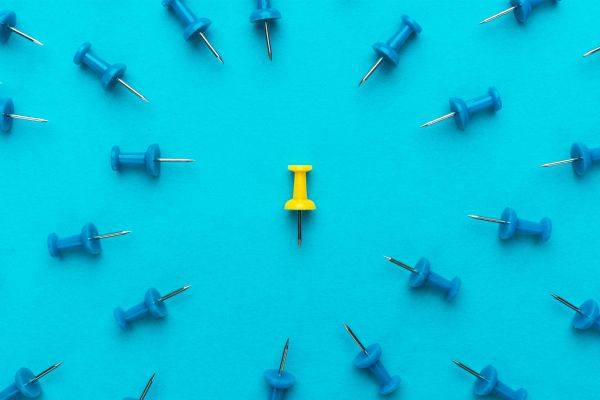Insights
INSIGHTS
All Topics
Converting one-time donors into life-long advocates
03 Jan 2025by Ioan Marc Jones
One-off donors on your database provide huge fundraising potential for charities. A recent RedEye report explores how charities can convert single donors into lasting advocates
The UK is a generous place. In 2023, 75% of people did something charitable, the equivalent of more than 40 million people. Nearly three-fifths (58%) of people donated money. The initial donations likely followed specific fundraising campaigns, special events, online appeals, or even peer-to-peer fundraising. And the donations would have generated significant sums for charities. But such a mass of donations may offer far more to charities in the form of data.
Databases are full of one-time donors: people who have supported your cause once, but haven’t donated a second time. A RedEye report found one-time donors are unlikely to automatically re-donate, with just over a quarter (27%) providing a second donation. Likelihood of re-donating grew after two donations (45%) and grew further after three (54%). The report shows, in simple terms, that donor bases provide huge funding potential and charities should prioritise the conversion of those who have donated in the past.
In this article, we are going to explore the RedEye report in detail and give charities best practice advice for converting one-time donors. We will cover, among other things, the necessity of the post-donation journey, the need to effectively test, and the importance of segmentation.
The importance of post-donation journeys
You should have a post-donation journey ready for any and every donor, but it is vitally important after someone’s first donation. Research shows that donors are 400% more likely to donate again if thanked within 48 hours and seven in ten donors prefer to know the impact of their donation. You should aim, if possible, to automate the follow-up comms and the simplicity of a well-timed ask might create an instant recurring donor.
But if donors do not donate a second time based on a simple ask, charities should re-engage with ‘impact messages’, showing how their donation have helped and how a repeat donation will provide further impact. Timing is essential. Exploring pre-existing donor data will help you find optimum times to engage. Identify the average time it took for donors to make a second donation and you can use that time as a trigger for re-engagement.
The science of A/B and multivariant testing
Charities should use A/B and multivariant testing to track the content and comms that drives the best conversion rates. By testing you can optimise ongoing campaign design, layout, and messaging, perfecting the post-donation journey and improving return on investment (ROI).
Testing will result in incremental improvements. The more one-time donors you approach, the more you can optimise based on results, the more conversions you’ll make, the greater your ROI.
RedEye suggests two forms of testing, both providing different benefits. The first, A/B testing, allow you to directly compare attributes and decide the better performer. You’ll need two isolated attributes, so best to practice with the same email but a different subject line or call-to-action (CTA), so you can clearly identify the reader’s preference and improve future emails.
Multivariant testing allows you to test different layouts using common elements. Different combination of images, CTAs, messages, and so on will generate different results. Best practice is to use a combination of A/B and multivariant testing to find the best attributes along with the best layout, creating an optimised email to convert your one-time donors.
The art of donor segmentation
The above steps creates an optimised journey. But, to perfect post-donation journeys, you need to segment your single donors audience even further and provide content that specifically appeals to each group. The reason is simple: donors interact to your content and comms in different ways.
RedEye suggests three ways to refine your single donation segment. You can explore engagement levels, looking at people who interact frequently with your website, or people who show interest in social media accounts. You can base content on the knowledge that such donors are already invested.
Donation value provides another method for segmentation. You can explore one-time donors who have donated above or below the average and build content you feel will resonate. Your second ask, for example, might prove higher or lower for that particular segment.
Finally, you can refine using artificial intelligence (AI) for predictive analytics. AI tools can help you predict the people most likely to make another donation based on data of past donors and the routes to convert them on previous occasions. The final route is complex, but can prove particularly successful, as it depends on more data points from previous donation processes.
Remember that you’ll need to test your imagery, messaging, and attributes with segments, finding the best combination for each. Only be testing can you maximise your overall ROI.
So, as specified above, success depends on planning a post-donor journey, perfecting timing using pre-existing date, segmenting your donors, and testing in perpetuity. Such steps allow charities to improve success rates, transforming one-time donors into life-long advocates.
Find out more
Download the RedEye report from the above link
Ioan Marc Jones
More on this topic
Related Content
Recommended Products
Recommended Products
Featured Products
Our Events
Charity Digital Academy
Our courses aim, in just three hours, to enhance soft skills and hard skills, boost your knowledge of finance and artificial intelligence, and supercharge your digital capabilities. Check out some of the incredible options by clicking here.

















